If you’ve done even the most cursory research into travel backpacks, you’ve surely come across the Farpoint backpacks by Osprey (or the Fairview, the women’s edition).
They’re undoubtedly among the most popular backpacks. I, too, backpacked around the world with my trusty Farpoint 40 and, later, a Farpoint 55.
Now there is a brand new version of the timeless Farpoint — the Farpoint Trek.
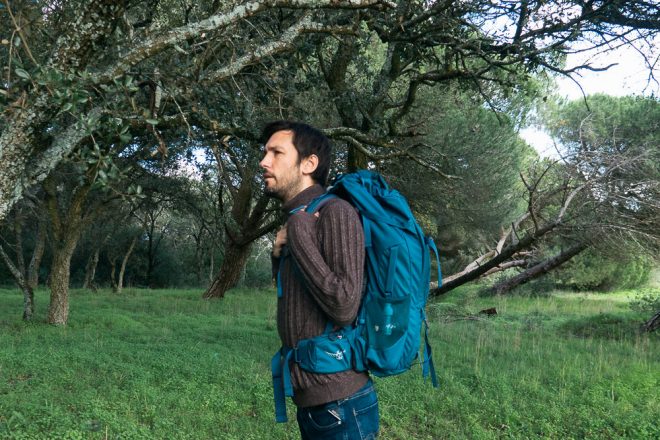
But unlike what the name suggests, I believe this bag is not just for trekking. In fact, I think it’s ideally suited to long-term backpackers, round-the-world, and gap-year travelers who simply want more space as well as the option to take it on treks or excursions.
As usual, this is not a sponsored article, but my own review.
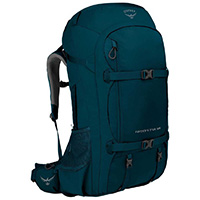
Price $219
Pros
- Adjustable suspension system (4 heights)
- Insanely comfortable trampoline-style back
- Included raincover, straps for tent/sleeping bag
- Integrated compression system
Cons
- No padded laptop compartment
- No integrated travel organizer
The different Farpoint backpacks
Before I get into the pros and cons, let’s consider where this pack fits into the overall Farpoint product line.
The Farpoint 40 is a carry-on size backpack. This means it’s allowed onto planes as carry-on luggage. Like all Farpoints, you zip this bag open from the sides like a suitcase, which makes it easy to get your stuff out. The 40-liter size encourages packing minimalistically; I think the size is ideal for traveling through one type of climate, e.g. summer backpacking in Europe or traveling around Southeast Asia.
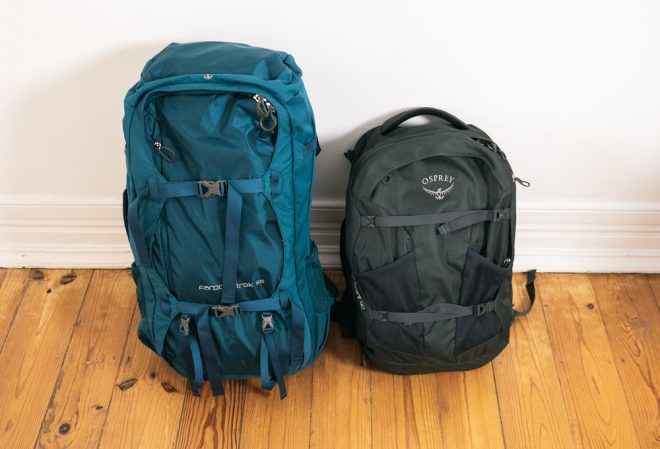
The Farpoint 55 is not just an upsized 40; it’s a whole different design. It has a 40L main part that is not carry-on compliant, along with a 15-liter daypack that you can unzip and use separately, or attach to the shoulder straps for turtle-shell-style wearing. I like the Farpoint 55 but find its daypack is too basic and have rarely ended up zipping the two pieces together.
The Farpoint Trek 55 is a new design that is just one big 55-liter pack. It has a more advanced suspension system similar to a trekking bag, but you still zip it open from the sides like a suitcase. It is essentially a hybrid between travel bag and trekking bag designs.
There are also 70-liter versions, though I personally consider these too large for general travel purposes.
Features of the Farpoint Trek 55
Compared to other versions of the Farpoint and Fairview, the Trek has a number of unique features.
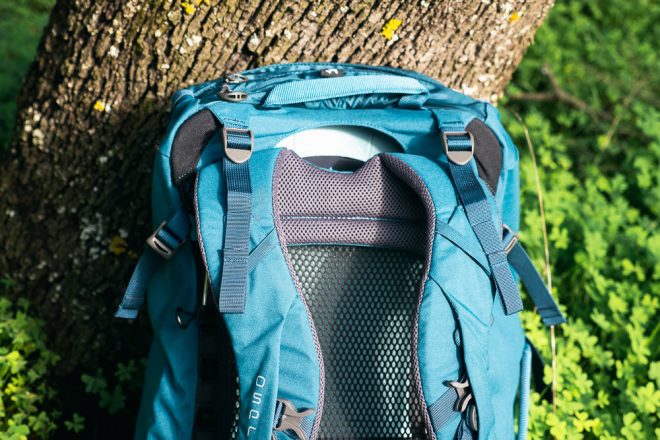
Trampoline-style back. This is a common feature for trekking bags but rare for travel backpacks. Not only does this keep the contents of the bag from pushing against your body, but it also maintains ventilation. It will do a great job of preventing a sweaty back even in hot climates.
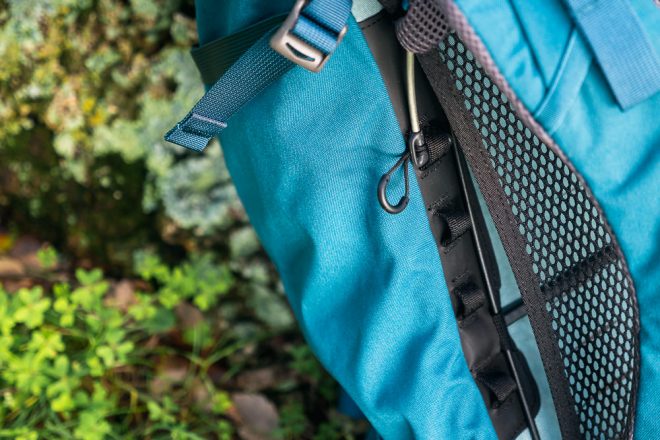
Adjustable suspension system. You can fully adjust the height of the suspension system to 4 different settings, based on your torso height. This is killer! Since I’m rather tall (1.94m or 6’4) not all backpacks fit me well, but the Trek on its highest setting fits perfectly. I hiked for 10km with a full pack and barely noticed I was wearing it. For me, the Farpoint Trek is at least twice as comfortable as the regular Farpoint.
By the way, the Trek version of the Farpoint does not have an S/M or M/L version, since it can be adjusted to any height.
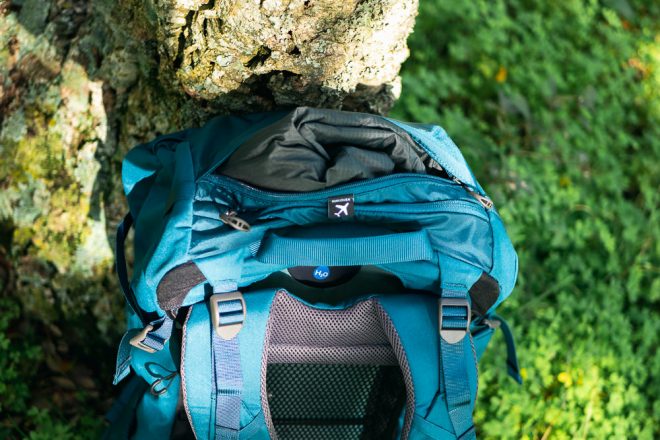
Top pocket with rain cover. The bag already seems quite weather-resistant, but this will give you one more layer of protection. It’s also recommended to use this cover when checking the bag in as luggage, as it prevents straps from getting stuck.
Top pocket. There is a small pocket adjacent to the rain cover compartment for quick access.
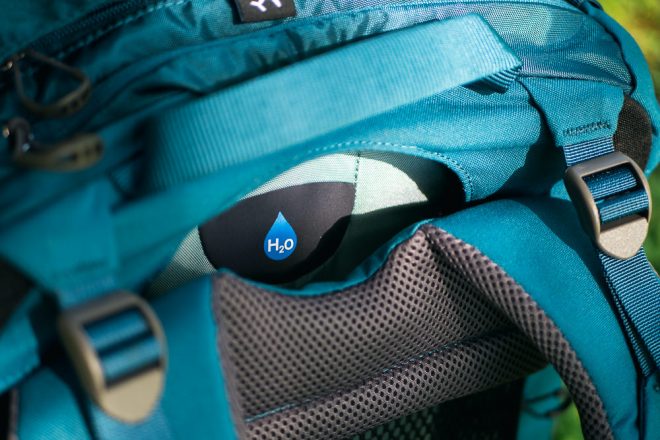
Support for a water bladder. A water system for trekking is not included, but you can easily add one if you want.
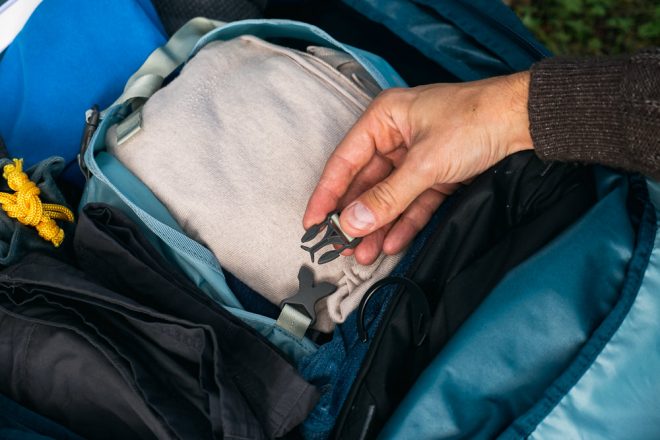
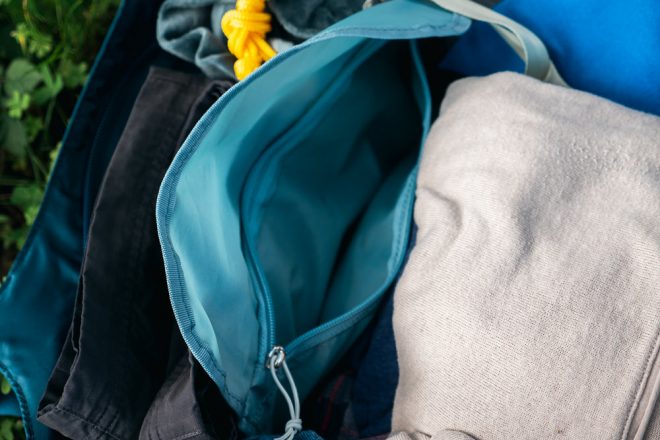
Integrated compression system. While the regular Farpoint which has no internal organization features, the Trek does have several.
Firstly, it has a sleeve close to the back which you can fill with small items (I used this to store underwear and socks).
Above this are two flaps, which can hug around your travel items (most likely, a stack of clothes) and can be strapped tight. This lessens the need for packing cubes, though one or two will still come in handy. Osprey sells some nice packing cubes if you need them.
Finally, the flaps also have zippers with pouches for a few small items.
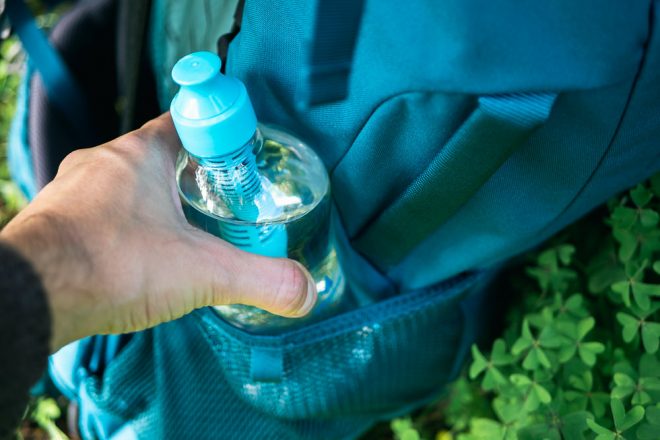
Large water bottle pocket. These two pockets on each side are particularly large and will easily fit a 2L bottle.
External straps. Finally, there are two external straps for attaching a tent, sleeping bag, hammock, or whatever else you can think of.
What the Farpoint Trek 55 doesn’t have
Compared to the other Farpoint bags, there are two things the Trek 55 is missing.
Laptop compartment. There isn’t a padded compartment for a laptop. It just isn’t that type of bag. If you do travel with a laptop then I would suggest carrying it in a separate daypack. This will be safer anyway, as it lets you keep this valuable item close to you during transit.
Travel organizer. While there are many pockets as well as a compression system, unlike the Farpoint 40 or 55 there isn’t a central pouch with lots of little sleeves to store small items. This can be mended by purchasing a separate travel organizer, or by storing such small items in a separate daypack, shoulder bag, or purse.
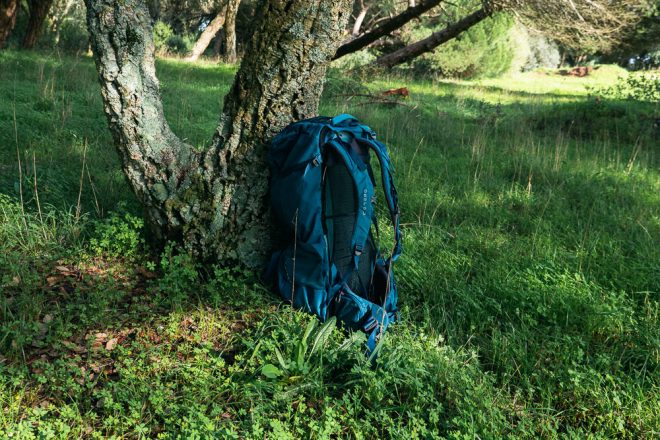
Who is this backpack for?
If you love trekking, then this backpack could certainly be your main trekking bag. Though there are also other backpacks that are designed with only trekking in mind, like the Osprey Atmos series.
I think the Farpoint Trek 55 is actually perfect for long-term travelers who want a better harness and better rain protection, while also having the option of using their pack on treks and other adventures.
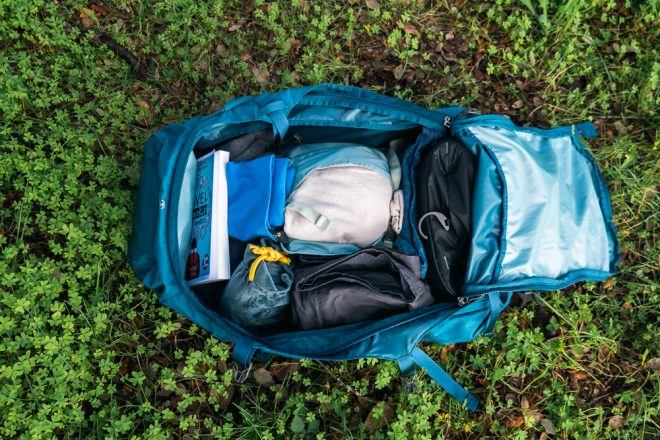
The Trek opens from the side, like a suitcase. The items in the center are held together by compression straps, keeping everything else in place too.
When I think back to my travels in South America, I can see how this bag would have been perfect for it. Since I needed to pack clothes for both the tropical areas and the colder highlands and mountains of the Andes, I struggled to fit everything into just a carry-on size bag. The Farpoint Trek would have given me just a bit of extra space. Along the way, I could have also easily taken it on the Inca Trail trek in Peru or the Lost City trek in Colombia.
Since I was also traveling mostly overland in Latin America, it wasn’t that important for me to have a carry-on bag. Checking in the backpack once or twice didn’t matter so much, as I was mostly traveling in buses and trains.
This backpack might still be a bit overkill for, say, a city-hopping trip in Europe. In that case, you can probably make do with a smaller carry-on like the Farpoint 40 or Tortuga Setout.
But if you are going on a longer and more adventurous trip, I think the Farpoint Trek 55 will work really well.
Update: Since I originally posted this review I also put this pack through its paces while trekking the Rota Vicentina in Portugal. I used it while hiking up to 25km (16 miles) a day for many days on end without any discomfort or issues. So, if you’re wondering if it’s a great trekking pack, I think it definitely is.
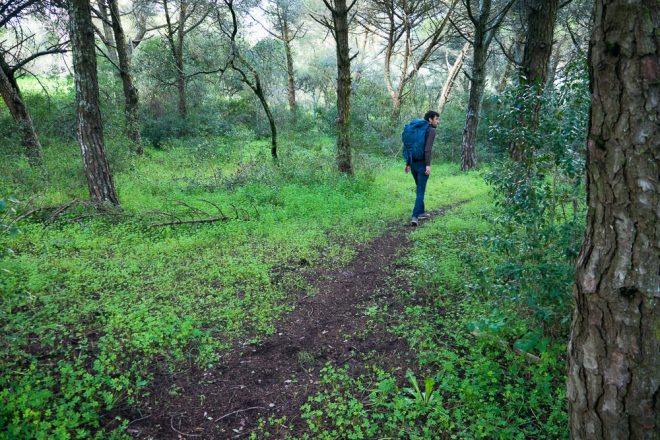
Combining with a daypack
When reviewing the Farpoint Trek 55, it occurred to me that it could be part of a very cool set-up for long-term travel.
The bag itself has plenty of space for clothing and travel gear, though it lacks organization features for smaller items or electronics.
But that’s okay. You see, on the shoulder straps are two little clips that let you attach an Osprey Daylite Travel backpack, carrying both bags in a turtle-shell fashion. (Yes, this would be almost exactly like the regular Farpoint 55!)
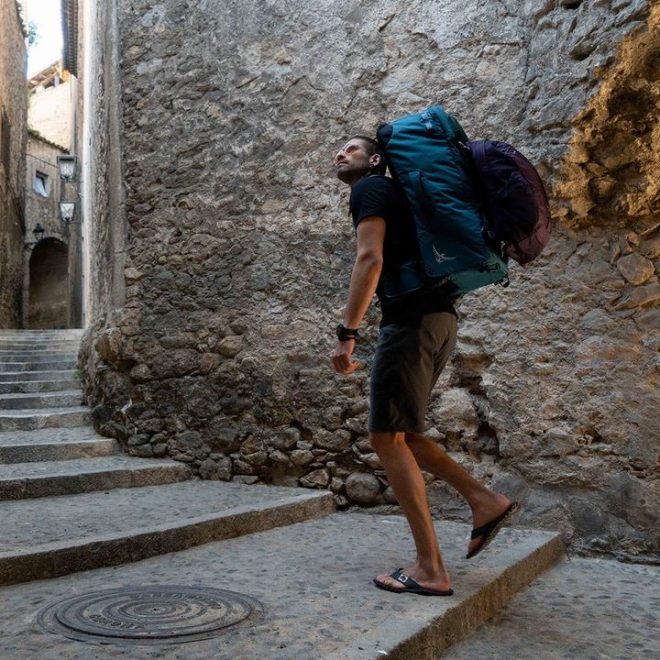
The daypack can then hold any electronics, valuables, and documents. You can always keep it on you in transit, while the big bag can chill in the bus or train’s luggage rack.
The other Daylite bags are also compatible, but they can only be attached on the back of the Farpoint Trek and not on the front.
If I were going on a big round-the-world trip or gap year today — one that would take me through multiple climates — I would likely go for this set-up instead of just a single carry-on.
Conclusion
The Farpoint Trek feels very much like the original Farpoint, but better.
You may have noticed that it also costs about $40 more, but you get some great features for this in return.
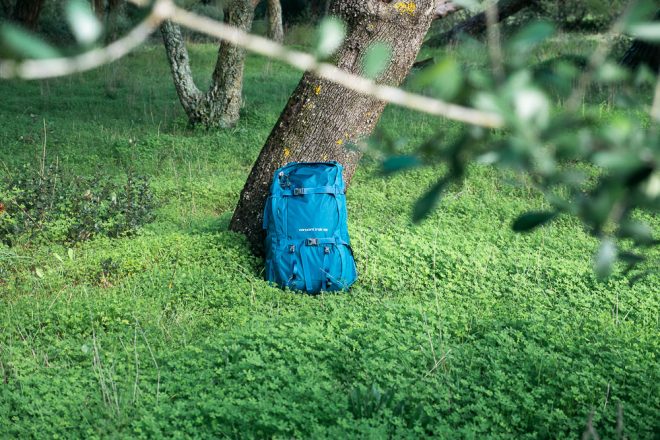
I get questions all the time about the original Farpoint. Many people ask me whether they should get the S/M or M/L version. With the Farpoint Trek it doesn’t matter, because you can completely adjust the harness to your torso length. This, combined with a firm trampoline mesh back panel, make this much more comfortable to wear.
The other common question I get is if the 40L carry-on size is big enough for certain trips. I think traveling minimally is great, but there are some trips where you might need a bit of extra space. If you are on the fence about how much space you need, then the Farpoint Trek 55 is a really nice step up from carry-on.
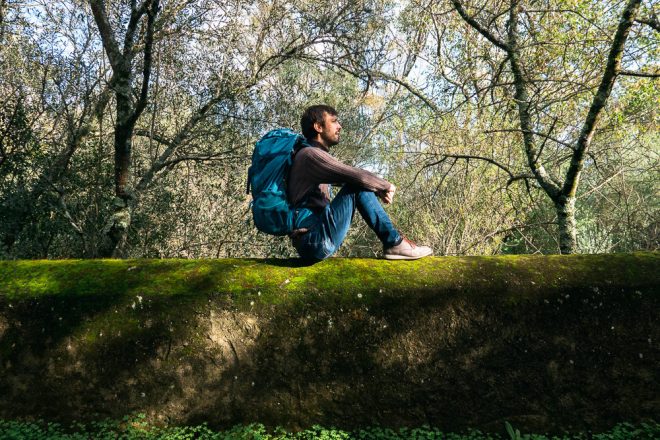
I think this is obviously a great pack for any travelers who also expect to do some trekking. I’m reminded of my trip to Nepal where I spent my time partly in the cities and partly trekking Annapurna. I climbed that mountain with a Farpoint 40, but the harness was not always so great for carrying for hours on end. The Farpoint Trek would have fared much better.
But I think the best fit for this bag is actually round-the-world or gap-year travelers who will travel mostly overland.
When you’re not too fussed about staying within airline carry-on limits, then a bag like this can be a fantastic option. This is especially true if you need to pack for multiple climates.
While the lack of an organization panel or the bag’s slightly higher price may be drawbacks for some, I think they are outweighed by the many other advantages. I wonder if the name of this backpack was poorly chosen, as some might assume it’s just for trekking. For me, this is really just a Farpoint Premium — an evolution of the original design. If you’re looking for a mid-size pack, I now recommend it above the regular Farpoint 55.
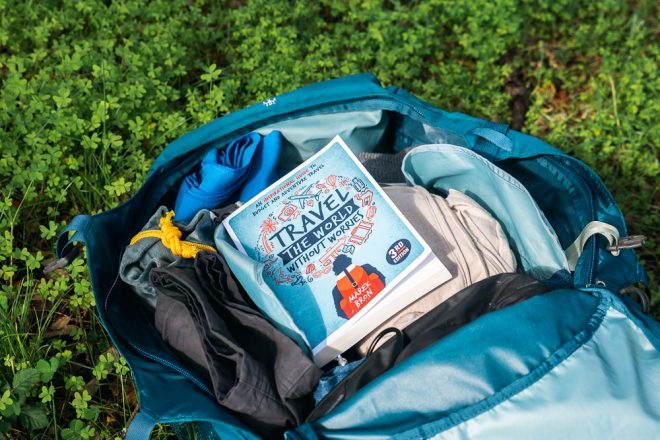
Going on a long trip? Don’t forget to grab a copy of my book, which is filled with packing and planning tips!
P.S. As usually with Osprey backpacks, the colors look a bit different in reality than the official product photos. I reviewed the Petrol Blue edition, which in real-life looks more light blue than dark cyan.
P.P.S. The Farpoint Trek 55 is available directly via Osprey, as well as the Fairview Trek 50 (women’s version). It’s easiest to purchase from Osprey directly rather than from a retailer, and on their site you can also learn about their All Mighty Guarantee and different color- and size options.
Some links may be affiliate links, meaning I may earn commission from products or services I recommend. For more, see site policies.
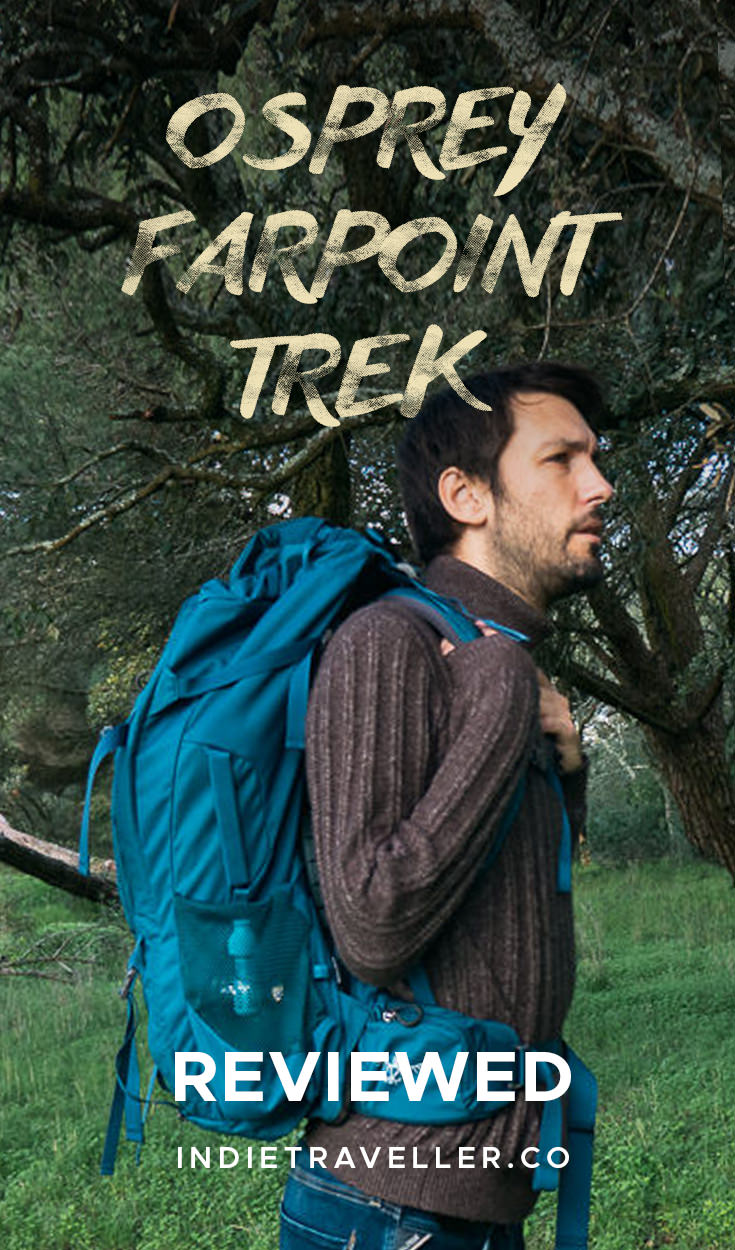
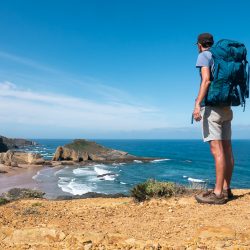
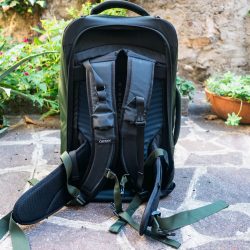



Thank you for the review!
I just need one advice, for most of the airlines the
carry-on standard is 55x40x23. Osprey Trek 55 will break
the 55 limit by around 7 cm. Have anyone, more seasoned traveler
than me :), had any experience if this qualifies as carry-on?
I like very much is design but I am a bit concerned about
airlines rules here 🙂
Thank you in advance!
Yeah this won’t qualify as carry-on. Honestly I’ve sometimes been able to bring on board bags that are a bit too big… unfortunately the FP55 is too tall rather than too deep, so visually it easily looks as oversized to any staff checking it. You could try it maybe, if it’s not filled 100%, but nothing guaranteed especially with stricter budget airlines 🙂
Great review. I travelled Asia with an Osprey Porter 46. Fantastic backpack, horrible straps. The Fairpoint Trek 55 would have been a lot better, although most of the time the large backpack was sitting in the corner of the room/hostel, while the daypack was on my back.
Since these new styles came out (Farpoint Trek/Fairview Trek), I’ve been wondering whether the Fairview 50 would be a great option for men as well in the hope that it might also be able to act as a carry-on – as it’s slightly smaller than the Farpoint 55.
Ha, I have to agree about the Porter’s straps… I’m not a fan either! The Trek’s straps are muuuch better.
I haven’t used the Fairview myself, so not sure what it’s like to carry it, but I don’t see why not. I believe it has just minor adjustments in its design.
I’m a 5’9” guy and tried the Fairview Trek 50 thinking that since it’s smaller, I may get away with using it as a carry-on. But I returned it immediately when I received it. The hip belt is way too high and it’s definitely not sized for men.
Hi, have you tried the xenith? I’m tork between the farpoint 75 and xenith.. the farpoint is more well rounded but i dont want to do a multi day hike and have my back hurting… also I’m 6,2
Haven’t tried the Xenith – only the Atmos which is an Osprey backpack specifically made for trekking. I think the Atmos and Farpoint Trek are about equally comfortable.
HI Marek,
Thanks for the review. SOunds liek you have a fantasitc life travelling.
Could you explain this bit to me: The other Daylite bags are also compatible, but they can only be attached on the back of the Farpoint Trek and not on the front.
The phto shows the daylite bag attched to the back. Can you also attach it to the front? How would that work?
Many thnaks
Mike
Hi Mike, I own a Fairview Trek 70. You can attach the day lite travel pack to the shoulder straps of the farivew/Farpoint Trek when wearing the bags in a kangaroo style. This means that the day lite travel pack is on your front so tickets/phone, etc can easily be accessed and valuables are better protected from petty theft when travelling. It works in the same way as the older-style fairview/farpoint packs. See these images for an example with the older-style Farpoint: https://thepointsguy.global.ssl.fastly.net/us/originals/2018/02/osprey-farpoint-70-turtle-close.jpg?width=700&dpr=1&auto=webp
https://thepointsguy.global.ssl.fastly.net/us/originals/2018/02/osprey-farpoint-70-turtle.jpg?width=700&dpr=1&auto=webp
Hope this helps 🙂
Hello Marek, thank you for your informative and honest review. I’ve had my eye on the women’s version of the 50L backpack since it came out, as a replacement for my current (too big) backpack, and for both travel and trekking. One downside for me is that it is relatively heavy, at over 4 lbs. I’ve checked it out in person and noticed the pack cover is pretty hefty. Do you know how heavy it is? I’m guessing that’s included in the weight on the Osprey site? Thanks again!
Thank you for your article. I’d been a big fan of Fairpoint 55 last few years. I’ve always took it on a plane as a carry on and never had a problem. It fit right in the over head bin. I thought I’d never buy another traveling backpack. Until I spent a week in Nigeria and sweaty back was bothersome. So I looked into Farpoint 55 Trek but it was clear I could no longer take it as a carry on. However I’m looking forward to get Fairview (women’s version) in 70L and if I don’t pack it to the brim, I should be able to fit it in over head bin. The limiting part of the design is the rigid back support. For women’s it is much shorter and if you minimize the height of the pack, it should work. Any thoughts?
Are you referring to the Fairview Trek 70? The 70 will definitely be too large for carry on even if you don’t fill it completely. Even with the 55 you have the problem of the back support, as you mention… the rigid part of the backpack is actually very close to the outer edge of the backpack, so there is not much leeway there. It’s a bit hard to find a truly carry-on backpack that also has a well-ventilated mesh back.
Hi Marek,
Thanks for your fair review. I am considering to purchase Farpoint 55 trek but I have some concerns about suspension system. I read online that the adjustment points aren’t stable enough and would pop out when they swing the pack onto shoulders . I know you set the most top one so there isn’t any room to play but do you think other points are fixated firmly enough as well?
Hey Reza. Hmm I hadn’t yet heard of that concern. I do keep it in the top one all the time. I’ve never had any issues and just last week was hiking the Rota Vicentina in Portugal with this pack, swinging it on and off any time I stopped anywhere for a view (and I’ve never had it pop out). All the adjustment points seem functionally the same to me, but I haven’t tested the lower settings given to my height.
Hi there, firstly I’d like to say thank you for a great review!
I’m planning a 7 night camping trip in a couple months but have no idea whether I should get the 75 or 55 version of the Farpoint Trek and was wondering if you perhaps have any advice?
Hey Gerhard, I must admit I don’t usually do much camping. I do think the 75 is generally speaking very big. The 55 would still fit a small dome tent and a roll-up matt on the outside, along with plenty of other stuff. But if you need to bring lots of pots, pans, a stove, or other camping gear, then maybe the 75 is the way to go.